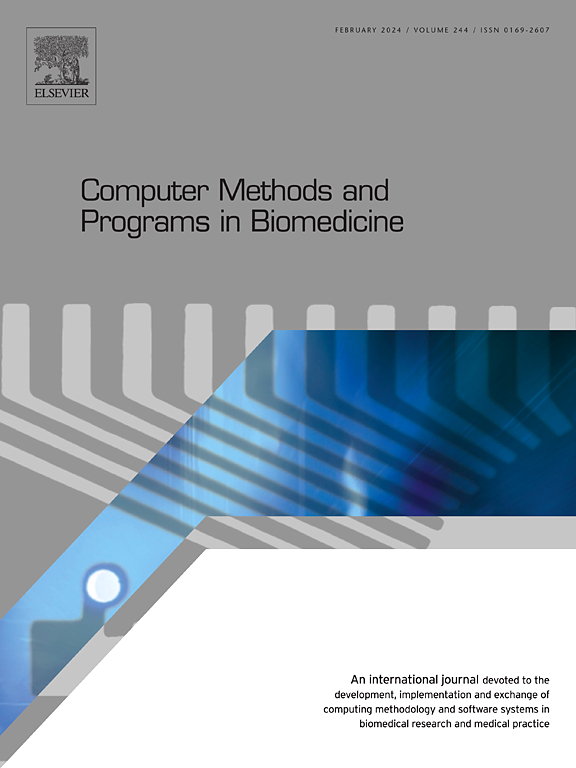A Physics-Integrated Deep Learning Approach for Patient-Specific Non-Newtonian Blood Viscosity Assessment using PPG
IF 4.9
2区 医学
Q1 COMPUTER SCIENCE, INTERDISCIPLINARY APPLICATIONS
引用次数: 0
Abstract
Background and Objective
The aim of this study is to extract a patient-specific viscosity equation from photoplethysmography (PPG) data. An aging society has increased the need for remote, non-invasive health monitoring systems. However, the circulatory system remains beyond the scope of wearable devices. The solution might be found in the possibility of measuring blood viscosity from wearable devices. Blood viscosity information can be used to monitor and diagnose various circulatory system diseases. Therefore, if blood viscosity can be calculated from wearable photoplethysmography, the versatility of a non-invasive health monitoring system can be broadened.
Methods
A hybrid 1D CNN-LSTM architecture incorporating physics-informed constraints was developed to integrate rheological principles into data-driven PPG analysis. The shear-viscosity equation derived from the viscometer was used as ground-truth data. The signal obtained from the wearable devices was processed with noise filtering and wandering elimination to gain stable blood pressure waves. The neural network was trained using k-fold cross-validation and weight factor optimization, with the loss function incorporating rheological constraints from the Carreau–Yasuda model.
Results
The final estimation model achieved an accuracy of 81.1 %. The accuracy in the physiological shear range (50–300 s-1) was 84.0 %, outperforming other low and high shear regions. Mean absolute errors of 0.67 cP in the physiological range align with clinical viscometry tolerances (< 1 cP), demonstrating diagnostic feasibility. Statistical analysis revealed strong linear relationships between predicted and ground truth values across all shear rates (correlation coefficients: 0.619–0.742, p < 0.0001), with mean absolute errors decreasing from 7.84 cP at low shear rates to 0.67 cP in the physiological range. The accuracy and contribution of each parameter to the Carreau–Yasuda model were also analyzed. The results show that the contribution of each parameter varies based on the shear range, providing insight into weight factor optimization.
Conclusion
By non-invasively estimating blood viscosity from PPG, the diagnostic capabilities of wearable healthcare systems can be expanded to target various diseases related to the circulatory system. The demonstrated accuracy in physiologically relevant shear ranges supports the potential clinical application of this methodology.
求助全文
约1分钟内获得全文
求助全文
来源期刊

Computer methods and programs in biomedicine
工程技术-工程:生物医学
CiteScore
12.30
自引率
6.60%
发文量
601
审稿时长
135 days
期刊介绍:
To encourage the development of formal computing methods, and their application in biomedical research and medical practice, by illustration of fundamental principles in biomedical informatics research; to stimulate basic research into application software design; to report the state of research of biomedical information processing projects; to report new computer methodologies applied in biomedical areas; the eventual distribution of demonstrable software to avoid duplication of effort; to provide a forum for discussion and improvement of existing software; to optimize contact between national organizations and regional user groups by promoting an international exchange of information on formal methods, standards and software in biomedicine.
Computer Methods and Programs in Biomedicine covers computing methodology and software systems derived from computing science for implementation in all aspects of biomedical research and medical practice. It is designed to serve: biochemists; biologists; geneticists; immunologists; neuroscientists; pharmacologists; toxicologists; clinicians; epidemiologists; psychiatrists; psychologists; cardiologists; chemists; (radio)physicists; computer scientists; programmers and systems analysts; biomedical, clinical, electrical and other engineers; teachers of medical informatics and users of educational software.
 求助内容:
求助内容: 应助结果提醒方式:
应助结果提醒方式:


